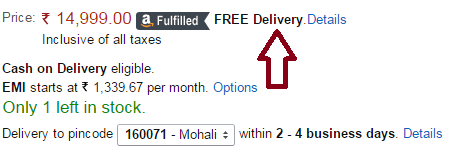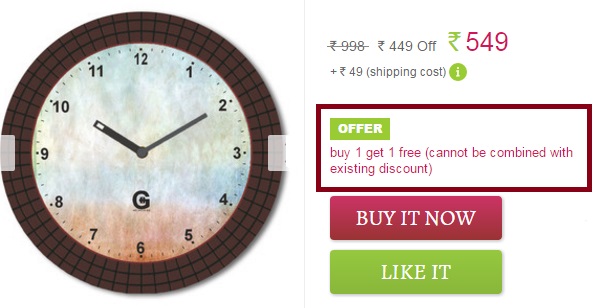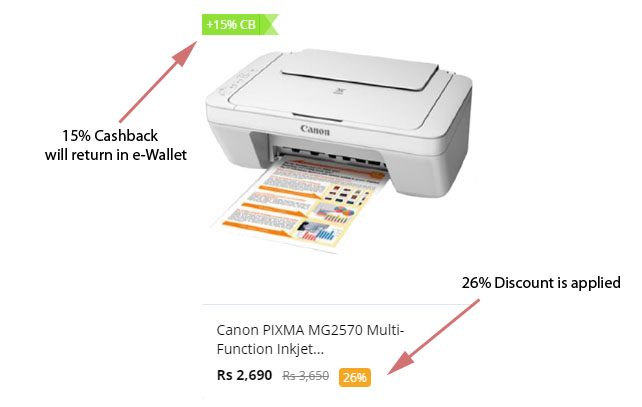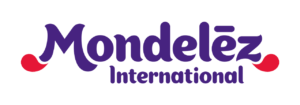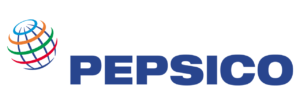Are your online sales going well? Is it in synchronization with your planning process? It might be possible that even if you think you’re doing well, your numbers may reverse the game when analyzed properly. A glimpse on e-commerce education can help you to judge your decision wrt grow your business.
In the context of 4P’s of Marketing, one of them is Promotion that plays a very effective role. A buyer always seeks for a promotional offer or discount once he goes online to buy a product. Promotion in E-Commerce segment is the process of bringing a product or service to the attention of the buyer. Promotion is an incentive offered to a consumer to positively reflect its buying decision. Effective promotions are the ones which intend to influence consumer’s choice favorably.
Promotions target customer’s mind to buy the product in various ways :
Planned considering target audience in mind – A well-made promotion creates a buzz at online marketplace thus gaining the attention of the target audience.
Generate interest – Good promotions must have the ability to generate the interest of buying the product within the buyer. Placement of promotional products is equally important as it holds eyeball of a user.
Create excitement – User keeps searching the product linked with some promotional offer. Word “Free” will create an urge to acquire the product, especially among Indians.
When this urge transforms to desire and further to necessity of product the customer’s mind strikes to click the Buy Button. All this finally lead to the generation of sale. Hence, Promotions are planned with a clear objective that the business owner desires to achieve.
Types of Promotions found in E-Commerce:
- Free Shipping
- Discounting Offers
- Buy One, Get One
- Promotional Cashback
- External Benefits
Free Shipping: What a customer has to pay includes Product price + Shipping charge on that product. A seller can accumulate a number of customers by providing free shipping service. Hence, a customer has to pay only the product price. Sometimes a seller may club shipping charge and cost of a product thus displaying total Selling Price. A seller can offer free shipping for an entire catalog or on selected items.
Such description makes the buyer think to buy the product from the seller that charges zero shipping amount.
Discounting Offers: A seller can give discounts on the products or it may be offered by e-commerce companies on their own. Products are cheaper at online marketplaces when compared to retail outlets. This case is commonly found at Electronic Products especially Mobile Phones and other Electronic Gadgets and is true in the case Apparels as well.
This snapshot is of Polo T-Shirt (Brand Pepe Jeans). Seller XYZ is offering 50% discount on the product. This image depicts how heavy discounts on Apparel section are being given at online marketplaces to attract customers.
Buy One, Get One Free: This is a fascinating offer for any buyer as one or more items are free on a qualifying purchase from the entire catalog or a subset of seller’s catalog. It seems as if the user is lucky enough to get two products for payment of one. As in Brick and Mortar we see too much crowd at places giving 1 on 1 offer similarly, the online platform also attracts customers in such way.
Promotional Cashback: Cashback offers are very common nowadays. Paytm is the leading player in the market under this category. Cashbacks are given either by Bank or by the Marketplace itself to attract the users and generate traffic. These type of strategies are applied to make a habit of customers to buy from an online platform as the reward in terms of money is something that gives satisfaction to Indian consumers.
It creates a thought that you not only acquire the product but also earned some cash reward on purchasing it. Paytm is giving cashback almost at every product listed there ranging from 2-3% to 25-30%. Sometimes promotional campaigns also result into 100% cashback for selected users.
External Benefits: It is somewhat related to post-purchase of a product. In such case, a customer gets an add-on from the marketplace in its online order. This is done to retain the customer for a longer time. Sometimes marketplaces/seller send a product (free of cost) along with the specific order. In some cases, there are some coupon codes/promo codes attached to the delivered product which can be used for another purchase. It’s a tactic to get hold of that same customer for another purchase.


